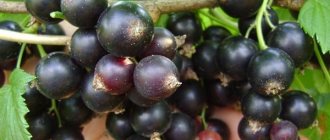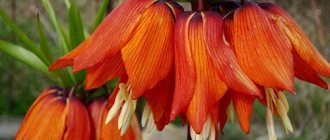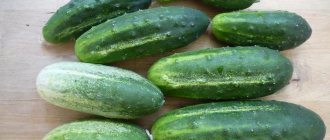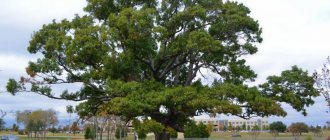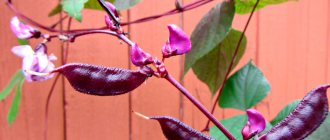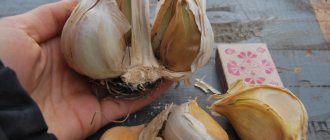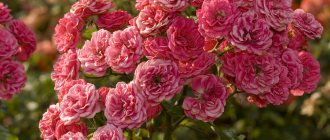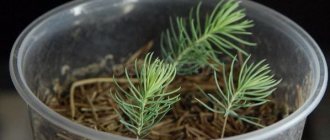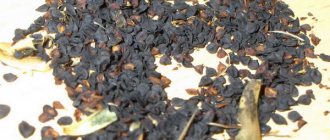The popularity of growing roses in gardens is only growing every year, thanks to the work of breeders who develop new and more advanced species and varieties. For residents of cold regions, it is most difficult to find a rose variety that can withstand severe frosts. This is the climbing rose Flamentanz, which can withstand not only temperatures of -35°C, but also heat of +35°C.
This flower is loved by many gardeners not only for its durability, but also for its magnificent, abundant flowering, which resembles the play of flame. That’s why the rose got its name: Flammen means flame, tanz means dance.
Description and characteristics of the variety
Thanks to its resilience, power and strength, as well as the will to live and the ability to endure unfavorable weather, this plant is popularly nicknamed the “unkillable rose.”
Below are photos and descriptions of the Flamentanz rose:
- From one to five buds bloom on the flower stem.
- The flower size is approximately 6-8 cm.
- Winter hardiness of the third level.
- The plant has a light but rather persistent aroma.
- The bush can grow in length and width up to 2 meters.
- The flower is planted in late April or early May.
The flowering of this rose variety is an incredible sight: the huge buds, reaching a diameter of 12 cm, burn with a bright flame, and can produce such a large harvest that the shoots bend and sometimes even break under the weight of the buds. Depending on the characteristics of the soil, flowers can be located on the bush either singly or in whole inflorescences, sometimes numbering up to 15-17 buds. At the height of flowering, a pleasant soft aroma emanates from the climbing plant.
The Flammentanz rose has one drawback, and perhaps it is the only one. The creator of the variety, William Cordes himself, spoke about it - the plant blooms only once a year and flowering continues for a month and a half.
There are other features of this plant that should be mentioned. For example, this variety is known for its resistance to various diseases, which can kill even the hardiest roses. If the Flamentanz rose grows under the sun, then no fungal diseases will affect it. As already mentioned, the crop can withstand frosts down to -35°C, while it does not freeze its roots and shoots, and therefore breeders allow them to be planted in climate zones 4-9, in accordance with the USDA climate map. It is for this reason that this plant has gained great popularity in the Scandinavian countries, as well as in the north of Russia.
Additional features of the climbing rose:
- The leaves are colored rich green, are quite large and have a characteristic shine.
- The spines are large and very sharp, firmly held on a wide base.
- The buds are terry, bright, there are from 20 to 40 petals.
- The plant has a pleasant, delicate aroma that does not cause headaches or fatigue.
- It has a powerful root system that does not freeze even in severe frosts and does not rot even during heavy and prolonged rains.
Good to know! Buds appear only on last year's shoots. The rose blooms only once a year, but if faded flowers are removed, it may bloom again. After planting, the rose takes root well, grows quickly and hardly gets sick.
History of selection
In 1952, a breeder from Germany, William Cordessy, decided to cross two varieties, Rose rubiginosa and Cordessy, that were popular at that time. The resulting result exceeded all expectations. So, in 1955, V. Cordes presented his product at an exhibition under the name Flamentanz.
From that moment on, the variety was officially registered and went on sale.
The peculiarity of the Flamentanz rose lies in the stunning beauty of its large inflorescences. The name of the rose translated from German means “fire dance”. The name suits the plant perfectly, because at the time of flowering the entire bush is strewn with large scarlet flowers.
Photo of rose Flamentanz
This rose has become very popular among flower growers. The plant is powerful, persistent and strong. Because of its will to live, the Flamentanz variety is popularly called the “unkillable rose.”
The official name of the variety is Flammentanz, but flower growers around the world can call the same plant by other names:
- Korflata;
- Flaming Dance
- Flame Dance;
- Vlammenspe.
Hybrid tea roses:
Hybrid tea rose UTOPIA Hybrid tea rose Augusta Louise Hybrid tea rose Red Intuition
Advantages and disadvantages of Flamentanz roses
This rose variety has no drawbacks, except, as mentioned above, one-time flowering throughout the year. However, this disadvantage of the plant is compensated by its magnificent flowering, unusual flower color and unpretentiousness in care and maintenance.
Other advantages of the Flamentanz variety are:
- If the rose is formed and healthy, it will not wither under the influence of weeds.
- The flower exudes a pleasant aroma that unobtrusively fills the entire garden.
- You can grow both the standard type and the climbing variety.
- The rose does not require special care other than pruning and watering.
Where is the best place to plant
Despite the fact that this variety is resistant to adverse weather conditions, the plant will still grow better and bloom profusely if a place is prepared for it:
- illuminated in the first half of the day by direct sunlight, and partially covered by shadow in the afternoon;
- protected from strong drafts and wind;
- endowed with rich fertile land.
Diseases, pests and ways to combat them
The Flamentanz variety is resistant not only to weather conditions, but also to diseases and pests. The rose is resistant to powdery mildew, rust and black spot.
The leaves will signal the disease
If other diseases are detected, you should contact a flower shop to purchase special preparations for treatment.
Note! If you choose a sunny area for the plant, the likelihood of infection with a fungus will be minimized.
Rosa Flammentanz is an incredibly beautiful garden plant that will brighten up any dull area. If you follow the rules of planting and care, you can achieve healthy and beautiful flowers.
Landing rules
The best time to plant a climbing rose will be late spring, when the temperature outside is already above zero, and there is no threat of frost returning, and the soil is quite well warmed up. To provide the plant with additional warmth, it is better to keep the seedlings in water. Before directly planting a rose in the ground, you need to pay attention to the rhizome of the plant: it must be strong and healthy. If unhealthy roots are noticed, they should be cut off. It is also necessary to remove weak shoots that are painful and frail in appearance.
Before planting a crop, you need to prepare the soil and planting site so that the rose takes root better and quickly:
- The hole for planting should be about 50x50 cm in size. If there are several plants to be planted, then there should be a distance of at least one meter between each seedling.
- It is best that the soil is fertile; additionally, peat or manure can be added to it for fertilizer. In this case, feeding will no longer be needed.
- A 20-25 cm layer of sea pebbles or crushed bricks should be placed at the bottom of the planting hole.
- Each hole should be watered thoroughly before planting.
- Then the seedling is carefully planted in the hole, covered with soil and compacted tightly.
- The finished bushes must be watered well and then sprinkled with sawdust. This is necessary for better and longer preservation of moisture in the ground, as well as to reduce the number of weeds around the rose.
Note! During the period of active growth, the plant does not require special care; it is enough to water it once a week. But do not forget to weed the weeds around the plant, and if necessary, fertilize (if the plant is not well established). If everything is fine with the sprout, feeding is not needed.
Conditions for growing seedlings in open ground
In central Russia, planting of park roses is carried out in mid-May or at the end of August until the second half of September. Autumn planting will allow the seedlings to take root before the onset of persistent frosts. Seedlings with a closed root system are planted throughout the growing season. For planting, it is best to use two-year-old seedlings; such seedlings quickly adapt and take root in new conditions.
Seedlings with a closed root system require preparation before planting:
- The roots are shortened by 1-1.5 cm.
- Elongated roots are cut to a third of their total length.
- Damaged roots are cut back to a healthy area.
- Shoots that are damaged and dried out are removed.
- Healthy shoots are shortened to 4-5 buds.
- 12 hours before planting, seedlings are kept in a container with water.
- Before planting, the root part of the seedlings is rolled in a clay mash.
In the table we consider recipes for soil enrichment and the rate of application of components that improve the mechanical structure of uncultivated soil:
| Components for soil enrichment | Components for improving soil structure | |
| Soddy soil, humus, peat, superphosphate are added per 1 m2 in a ratio of 5:4:1:1 | for heavy clay soils | for light sandy soils |
| Per 1 m2 add 5 kg of peat or sand with the addition of 100-150 g of compost and 400 g of wood ash. | Per 1 m2 add 5-6 kg of turf soil with an admixture of peat and humus. |
Two weeks before planting seedlings, it is recommended to add humus to the soil with the addition of superphosphate and wood ash in a ratio of 200-250 g of superphosphate and 150-200 g of ash. The seedlings will have enough fertilizer applied for a whole year. Rooted seedlings are fed in the first year of life only if fertilizers were not applied before planting. In such cases, add a liquid infusion of mullein to the soil at a rate of 1:10.
In the table we consider the types of fertilizers, the timing and rate of their application for park rose seedlings older than one year:
| Types of fertilizers | Application rate | Feeding periods |
| Superphosphate Urea Potassium salt | 25 g per 10 liters of water | During the period of bud break and growth of young shoots. |
| 20 g per 10 liters of water | ||
| 10-12 g per 10 liters of water | ||
| Liquid mullein | 1 part mullein per 10 liters of water | Once all the leaves have bloomed |
| Superphosphate | 30-35 g per 10 liters of water | When buds form |
| Superphosphate | 30-35 g per 10 liters of water | During the flowering period |
| Rotted compost | 1 kg per m2 | After flowering or 2 weeks before frost. |
| Humus | 2-3 kg per m2 |
The best period for propagating park roses by cuttings in central Russia is spring; for the southern regions, cuttings are planted in the fall. Before spring planting, small mounds of fertilizer are formed in the prepared holes and sprinkled with enriched soil. After planting, the root collar of the seedlings should be 4-5 cm deep in the soil.
The root system of the seedlings is applied to the mound, the roots are carefully straightened and covered with fertile soil.
- Watering. The first part of watering is carried out when the hole is partially filled with fertile soil. The second watering is when the hole is completely filled. As soon as the water is absorbed, a thin layer of fertile soil is laid on top.
- Hilling. To protect them from drying out, the seedlings are covered with a layer of soil up to 20 cm. As soon as the active growth of the seedlings begins and the shoots grow by 3-4 cm, the bushes are unearthed. This procedure is carried out in cloudy weather, which will avoid a sharp transition from wet to dry conditions for keeping seedlings. The unplanted seedlings are sprinkled with compost or peat in a layer of up to 5 cm.
- Trimming. It is not recommended to prune shoots before autumn planting. Seedlings up to 30 cm high are planted, which will protect young plants from frost throughout the winter. In spring, young plants are unplanted and pruned in the same way as in spring.
Features of care
Caring for the Flammentanz rose is quite simple - no more difficult than caring for other garden flowers: regularly water, fertilize and loosen the soil, and prune.
Watering
Although the variety is resistant to frost, the crop does not tolerate drought. This will affect both the condition of the plant itself and its flowering. In dry summers, the optimal amount of watering is once or twice a week, using at least 20 liters of water. Roses love various water procedures and have a positive attitude towards spraying.
Important! You can spray the plant only in the evening or morning so that the crop does not get burns on the leaves.
Fertilizing and loosening the soil
In the first year of life, a young shrub does not require feeding, since for active growth and development it has enough nutrients in the soil. In the following years, the rose will need to be fed with organic fertilizers (compost, humus) while loosening the soil around the bush.
Liquid mineral fertilizers, which are designed specifically for roses, are applied immediately before the crop blooms. You can also give nitrogen fertilizers, which promote active plant growth, and phosphorus fertilizers, which improve the quantity and quality of developing buds.
An important point in caring for the Flamentanz rose is loosening the soil, since this procedure helps nourish the root system of the shrub. To retain moisture in the ground, and therefore reduce the number of waterings, you can mulch the soil with peat or sawdust under the bush itself.
Trimming
This variety of roses requires annual pruning, as it helps to form a compact but dense bush, and also rejuvenates the plant. The procedure is carried out at the end of summer, when flowering has already ended. It is necessary to remove damaged and old shoots, as well as branches that interfere with the formation of the desired shape of the bush.
Before you start pruning, it is important not to forget that the flowering of this crop occurs on last year’s branches, so lignified shoots can be removed only when they are damaged or interfere with the formation of a certain shape of the bush. Trim damaged and old branches with pruning shears.
Preparing for winter
As mentioned above, the main advantage of the Flamentanz climbing rose is its resistance to winter and frost. But this does not mean that she will not need winter shelter . On the contrary, it is an important condition in plant care, especially in the northern regions. After pruning the bush, the branches of the roses should be gradually bent to the ground. When the first frosts arrive, the shoots should be placed in loops and tied together. To preserve heat, the branches are placed on dry foliage.
When the temperature outside drops to -5...-7°C, the plant should be covered with film or other covering material, for example, you can use roofing felt or spruce spruce branches.
In spring, when the air temperature stabilizes, you will need to remove the cover and carry out sanitary pruning of the bushes.
Disease and pest control
This variety of rose is practically not susceptible to diseases, in particular, it is not affected by black spot and powdery mildew.
However, harmful insects can damage the plant. So, the danger is:
- Spider mite. This insect prefers to appear in drought and hot weather. Signs of its presence on the plant are a silvery coating on the foliage. To get rid of the parasite, you can use the acaricide Neoron.
- Aphid. If there are not too many small insects on the plant, then they can be collected by hand, first wearing gardening gloves. If the bush has suffered massive damage, then you need to use insecticides: Inta-Vir, Aktara or Shar Pei. Or kill pests with a folk remedy: soap solution. It is prepared as follows: grate 20 g of laundry soap and then add one liter of water. Spray the rose bushes with the resulting mixture.
What to do if the Flamentan rose does not bloom?
To understand how to behave if a rose does not form buds, it is worth deciding on the reasons for the lack of flowering, and then, having eliminated the root of the problem, the plant will produce an abundant amount of flowers.
So, the reasons for the lack of flowers on a rose may be:
- Lack of light. The rose should grow only in a well-lit area.
- No hive update. To renew the bush, you need to spray the plant with a solution of: 20 g of magnesium sulfate, 10 g of baking soda, 5 liters of water and 10 ml of ammonia. The irrigation procedure must be carried out every 10 days.
- Insufficient amount of nutrients. This crop needs fertile and loose soil.
- Incorrect trimming. All shrubs need regular spring sanitary pruning, after which only healthy and strong branches should remain.
Reproduction
Cuttings
- 10 days after the bush blooms, select a shoot that has three buds ready to grow.
- Prepare the cuttings in advance. Their width should reach 0.5-0.7 cm, and their length should be from 16 to 20 cm. Make a straight cut on top and at an angle of 45° on the bottom.
- Keep the shoots in the Kornevin solution for 12 minutes.
- After this, you can safely plant the cuttings in soil: a mixture of soil and sand.
Cuttings can be carried out in another way. The finished cutting is planted in a pot with soil and sand to a depth of 2 cm. To speed up the process and achieve a better effect, cover the sprout with a plastic bottle and then place it in a lighted place. After about a month, the cutting will be strong enough to be planted in a larger flower pot. So the sprout is left for the whole winter in a room with an air temperature of at least 25°C. By the beginning of May, when the weather has already stabilized and the cold has subsided, the seedling can be planted in open soil.
By layering
For this method of propagation, use shoots that sprout at the root collar. Sequencing:
- In early March, press the shoots to the ground and then place them in small grooves.
- Sprinkle loose soil on top of the shoots.
- The tops of the stems should be on the outside, and where they come into contact with the ground, make ring cuts - this is necessary to increase the intensity of the supply of nutrients.
- By autumn, the cuttings will have already put out roots, but they can only be separated the following spring.
